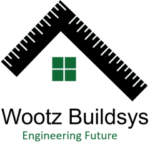
In the ever-evolving construction industry, speed, efficiency, and sustainability have become top priorities. One of the biggest advancements helping builders and architects meet these goals is Dry Construction — a modern building method that eliminates the traditional “wet” processes of plastering, curing, and concrete mixing.
Today, Dry Construction is transforming how buildings are designed and built in India, offering cleaner, faster, and more flexible solutions for residential, commercial, and industrial projects. But what exactly does “dry construction” mean, and why is it gaining such popularity? Let’s find out.
What Is Dry Construction?
Dry Construction refers to a building method where pre-manufactured materials like gypsum boards, fiber cement boards, light gauge steel frames, and prefabricated panels are used instead of traditional wet materials such as cement, sand, and water.
As the name suggests, this system minimizes or completely avoids water usage during construction, making it cleaner and more sustainable.
Dry Construction is mainly used for:
- Internal partition walls
- Ceilings and false ceilings
- External facades
- Modular flooring systems
- Lightweight wall claddings
Instead of relying on masonry and plastering, these systems use mechanical fasteners, screws, and steel frameworks to assemble components. The result? A structure that’s lightweight, durable, and extremely quick to build.
The Difference Between Dry and Wet Construction
| Aspect | Dry Construction | Wet Construction |
| Materials Used | Boards, panels, steel frames | Cement, sand, concrete, water |
| Water Usage | Minimal or none | High |
| Construction Time | Very fast | Slow due to curing time |
| Weight of Structure | Lightweight | Heavy |
| Maintenance | Easy and clean | Labor-intensive |
| Environmental Impact | Low | Higher carbon footprint |
| Flexibility | Highly customizable | Difficult to modify |
Dry construction simplifies the entire building process by replacing time-consuming and messy methods with precision-engineered solutions.
Key Components Used in Dry Construction
Dry construction systems rely on factory-made, ready-to-install components that fit together like a puzzle. Here are the most commonly used materials:
- Gypsum Boards – Lightweight panels used for internal walls and ceilings.
- Fiber Cement Boards (FCB) – Durable, moisture-resistant panels suitable for external walls and cladding.
- Light Gauge Steel Frames (LGSF) – Structural framing system that forms the skeleton of the building.
- Metal Studs and Channels – Provide support for wall and ceiling panels.
- Joint Tapes and Compounds – Used to seal joints for a seamless finish.
- Insulation Materials – For soundproofing and thermal performance.
The Process of Dry Construction
One of the main advantages of Dry Construction is its streamlined process. Unlike traditional construction, there’s no need for curing, drying, or lengthy site work.
Here’s how the process typically works:
1. Planning and Design
Every dry construction project begins with detailed design and material planning. Architects and engineers decide on panel layouts, steel framing, and load calculations.
2. Framing Installation
Light gauge steel or aluminum framing is installed to form the basic skeleton for walls, ceilings, or facades.
3. Panel Fixing
Pre-cut gypsum or cement boards are screwed onto the frames using fasteners. Openings for windows, doors, or electrical points are pre-designed.
4. Joint Treatment and Finishing
Joints between boards are sealed with tape and jointing compound for a smooth finish. Paint, wallpaper, or texture coatings can then be applied directly.
5. MEP Integration
Since panels are hollow, electrical and plumbing systems can be easily integrated within walls without damaging the structure.
This streamlined process allows for precision, minimal waste, and faster handover, which is ideal for projects where time and cost efficiency matter most.
Benefits of Dry Construction
Dry construction offers numerous benefits compared to conventional wet methods. Here’s why builders and developers are switching to this system:
1. Faster Construction Time
One of the biggest advantages is speed. Since there’s no curing or drying process, walls and ceilings can be completed in a fraction of the time. Large commercial or residential projects can be finished 30–50% faster.
2. Cleaner and More Efficient
No cement, sand, or water means no dust, mud, or mess at the site. This makes dry construction ideal for indoor renovations, hospital projects, and commercial spaces where cleanliness is critical.
3. Lightweight but Strong
Dry construction materials are significantly lighter than brick or concrete, reducing the load on foundations and overall building weight. Despite being light, these materials are structurally strong, durable, and resistant to fire and moisture.
4. Eco-Friendly and Sustainable
Dry construction supports green building practices by reducing water use, cutting down construction waste, and using recyclable materials. It also helps lower carbon emissions, aligning with sustainable development goals.
5. Flexible and Customizable
Drywall systems and steel framing allow easy modifications and redesigns. Need to move a wall or add new partitions later? It’s quick, clean, and affordable — perfect for evolving business spaces or modular homes.
6. Excellent Sound and Thermal Insulation
When combined with insulation layers, dry walls provide superior soundproofing and energy efficiency, making them ideal for offices, schools, hotels, and residences.
7. Cost-Effective in the Long Run
Although initial material costs may seem slightly higher, the overall cost of dry construction is lower due to savings in labor, time, and maintenance.
Applications of Dry Construction
Dry Construction is versatile and widely used across multiple sectors in India.
1. Residential Buildings
Drywall and LGSF systems are increasingly used in apartments, villas, and modular homes for partitions, ceilings, and even full structural frames.
2. Commercial Spaces
Offices, shopping malls, and showrooms benefit from the flexibility of dry construction — easy layout changes, fast installation, and sleek finishes.
3. Hospitals and Educational Buildings
Since these spaces need hygiene, cleanliness, and acoustic control, dry construction systems are preferred for their dust-free installation and sound insulation.
4. Industrial Buildings
Factories, warehouses, and workshops use dry partitioning systems and steel framing for quick setup and easy expansion.
5. Hospitality and Retail
Hotels and retail spaces frequently renovate or change interiors. Dry construction allows quick remodeling without lengthy downtime.
Dry Construction in India: The Growing Trend
In India, Dry Construction is gaining significant traction as builders aim for faster project delivery and sustainable solutions. With the rise of smart cities, modular homes, and PEB structures, dry construction has found a strong foothold in both urban and industrial sectors.
Leading construction companies are adopting LGSF (Light Gauge Steel Frame) and gypsum board systems to cut project timelines and improve quality control. Government initiatives promoting green buildings and sustainable materials are also driving this shift.
In fact, dry construction perfectly complements PEB (Pre-Engineered Building) systems — combining speed, precision, and sustainability for a smarter construction future.
The Future of Dry Construction
As India continues to urbanize and demand for efficient building grows, dry construction will play a crucial role in shaping the industry’s future. Innovations in prefabricated panels, modular design, and 3D printing will only enhance its potential.
We’re moving toward a time where “buildings are assembled, not built” — and dry construction is leading that transformation.
Conclusion
Dry Construction represents the future of modern building — a shift from heavy, time-consuming, and messy methods to a faster, cleaner, and more sustainable approach.
By replacing water-intensive materials with prefabricated panels and steel frameworks, dry construction offers unbeatable advantages: speed, flexibility, sustainability, and cost efficiency.
Whether for homes, offices, or factories, dry construction delivers smarter, greener, and more adaptable spaces — redefining how India builds for the future.
FAQs on Dry Construction
1. What is meant by Dry Construction?
Dry construction is a building method that uses prefabricated materials like gypsum boards and steel frames instead of wet materials like cement or plaster.
2. Is Dry Construction durable?
Yes. Dry construction systems are made from high-quality, moisture-resistant, and fire-rated materials that can last for decades with minimal maintenance.
3. Can Dry Construction be used for exterior walls?
Absolutely. Fiber cement boards and specialized cladding panels make dry construction suitable for external walls as well.
4. Is Dry Construction more expensive than traditional methods?
The initial material cost may be higher, but the overall cost is lower due to faster completion, reduced labor, and less maintenance.
5. Is Dry Construction eco-friendly?
Yes. It conserves water, reduces waste, and uses recyclable materials, making it an environmentally responsible building method.



